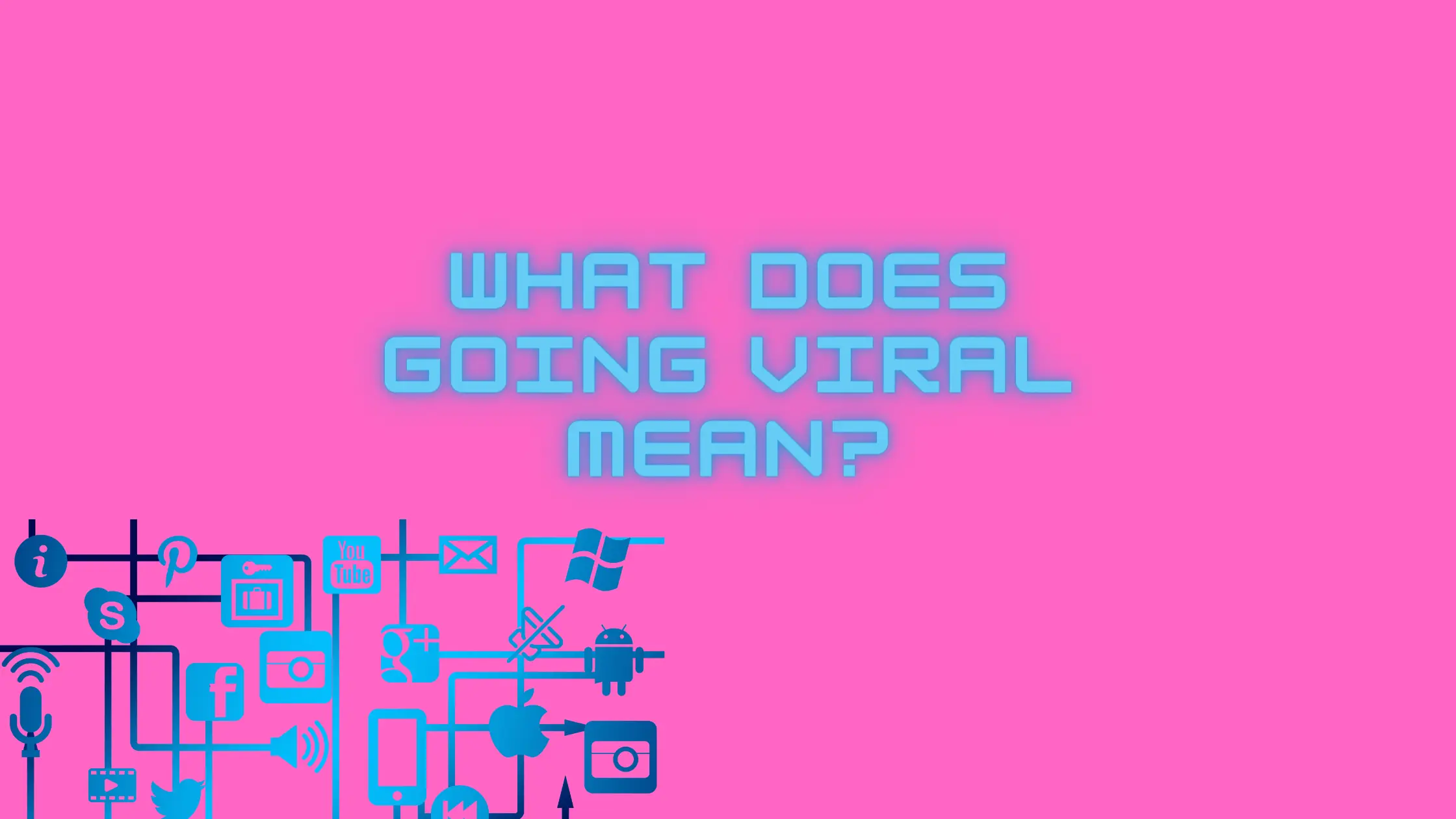What does it mean to go viral?
Viral is a word that describes digital content that becomes very popular in a short period. This term is most often used in the context of social media. You must’ve heard that some Youtube or TikTok video has gone viral. It means that in a short amount of time, it managed to collect a large number of views or to reach a large number of people.
Gone viral definition
Gone viral means something that has become popular on a large scale and in a very short time. It usually happens when the content is published on the Internet. So, it’s about content placed on the web, that is, on any social channel. It can be social networks, email, or any platform that implies an exchange between two or more people. The viral content is the result of sending it from person to person.
How does viral content spread?
Viral content can spread in different ways. It depends on the platform on which it’s represented. Let’s say it’s a video. It can spread if a large number of people have seen it or through trending tops. Also, as it’s very popular, the video needs to be viewed many times. Virality implies speed, so the faster growth of views affects its popularity. Video sharing also affects virality. The more times it’s shared, the greater the chance it will go viral.
What does it mean for someone to go viral?
Besides the content on the Internet, a person can also become viral. Such characters are also known as internet sensations. We’re talking about people who gain great popularity in a short time. It happened that they became mega-famous based on one post. Although it happens rarely, nowadays people have a higher chance of going viral. With the advancement of technology, digital platforms are gaining more importance daily. A representative on such online channels can bring many benefits. But, the virality of a person depends very much on what they’ve put on the Internet. And here we are – back to the content importance.
3 Viral content examples
There are many examples of viral content and you still remember some today. Compared to the former content, now it’s easier to gain popularity. A few years ago, virality was a challenge. Yet, some have succeeded, and their creativity has led them to millions of views. Each social network has its own terms to explain how many views is vial.
- Dove – Do you remember the social experiment conducted by the company Dove? Since it’s a competitive, well-known brand, there’s no need to introduce you to it. In 2013, Dove created a commercial as part of a phenomenal marketing campaign. Wanting to emphasize the woman’s natural beauty, they conducted an interesting experiment. As women generally tend to perceive themselves as less beautiful. Well, Dove decided to investigate it. The women from the commercial described their facial features to the sketcher. Based on their descriptions, the sketcher made a drawing. At this point, the woman and the sketcher did not see each other. The second part of the experiment involved drawing sketches based on the model, i.e. the same women. The results confirmed what Dove researchers had expected. Their descriptions didn’t match their real appearance. Such knowledge caused a storm of emotions. Among the models in the advertisement, and women from all over the world. This video had millions of shares and reached a massive number of people. Dove succeeded in its goal and this is what we call virality!
- Gangnam Style – This song could hardly have skipped you since it has an incredible 4.6 billion views on YouTube. Are you aware that this is more than half the population of planet Earth? Do you remember the cute Korean Psy? But do you remember his phenomenal choreography that you must’ve tried to perform at least once? The song Gangnam Style isn’t a classic song. You can say that it’s made to amuse and entertain, so the text itself doesn’t have much meaning and depth. Gangnam Style song went viral almost overnight. No one didn’t share this song, send it to friends, or play it. This song was played on the radio and in cafes. Even in clubs where the crowd always went crazy when the famous “Oppa Gangnam Style” started. At that time, there weren’t so many viral videos on YouTube, but this song broke all records and made history.
- Baby Shark – This is a children’s song listened to by babies, toddlers, and their parents. But, with the TikTok advent, the song goes viral and so does the trend it followed. TikTok is becoming the leading platform when it comes to videos. So, it provides a greater chance for some content to go viral. This also happened with a simple children’s song. This song followed various content on TikTok, but its virality begins in China. A choreography followed by a remix of this song appeared on TikTok. Recreations of the original video have only begun to multiply. In a short period, people all over the world began en masse to record dances accompanied by the song Baby Shark. If you don’t know the name of the song, play it and after the first few notes, you will know what it’s about.
These are a few examples of viral content. As you can see, any content can become very popular. Commercial, song, or TikTok trend, it is completely uncertain. Well, you also need a little luck, of course.
Is going viral always good?
Sometimes virality is not the best option. Why? Here are some of the reasons:
- If you want virality to be part of your marketing strategy, side effects can happen. Virality strikes a huge audience. This way you can miss your target audience. The people you want to target have particular affinities, wants, and needs. If you’re starting from the idea of going viral, it’s very easy to miss out on what your target audience wants.
- Starting with the idea of creating viral content, you can put pressure on yourself. Sometimes it takes time to build a quality, credible brand. For a brand to be recognizable, it must stand out from its competitors in some way. If you’re under pressure to go viral, you’ll most likely follow what’s trending. But, your goal shouldn’t be to copy but to be different. In that case, virality isn’t the best option. Think about it, not even Nike or Coca-Cola became popular overnight.
- Quality should always come first. Of course, it happens that certain, at first glance, nonsensical content becomes viral. It means that it’s catchy. Ask yourself whether you want to achieve quantity or quality. It all depends on your wishes and intentions. Of course, the luck factor is always decisive, so the solution isn’t always in our hands.
- Of course, one of the main examples of why virality isn’t always good is when you don’t even want to be viral. Certain things often happen when we least expect them. Sometimes a harmless banter with friends can go viral. Yet, this isn’t everyone’s goal, as some people do not crave popularity. Yes, can you imagine, some people don’t enjoy being in the center…
How can going viral help your business?
When it comes to business, virality can help you become recognizable. Yes, sometimes it’s safer to go step by step and build credibility over time. Yet, the faster way doesn’t always have to hurt. Going viral can help you jump many steps and reach a large number of people. It’s in everyone’s interest to have as many followers, customers, or clients as possible. Virality can bring exactly that. Virality can mean trust, as people tend to trust more content that has been “approved” by a large number of others. Especially if they learned about certain content from friends or close people. Virality can help you get more conversions and ensure more sales. If you’re an influencer and create content for social media, virality is one of your goals. This way you could highlight your brand and become very famous.
Conclusion
You can say that virality has become a phenomenon in the modern world. The digital environment offers us so many opportunities. Among other things, to stand out. Seeing others who have succeeded makes people want their piece of the viral cake more and more. Sometimes, you can achieve virality by following trends. And of course, creating what people search for the most. Yet, luck is a big factor and virality is more likely to happen. Without notice, suddenly, and when you least expect it.




